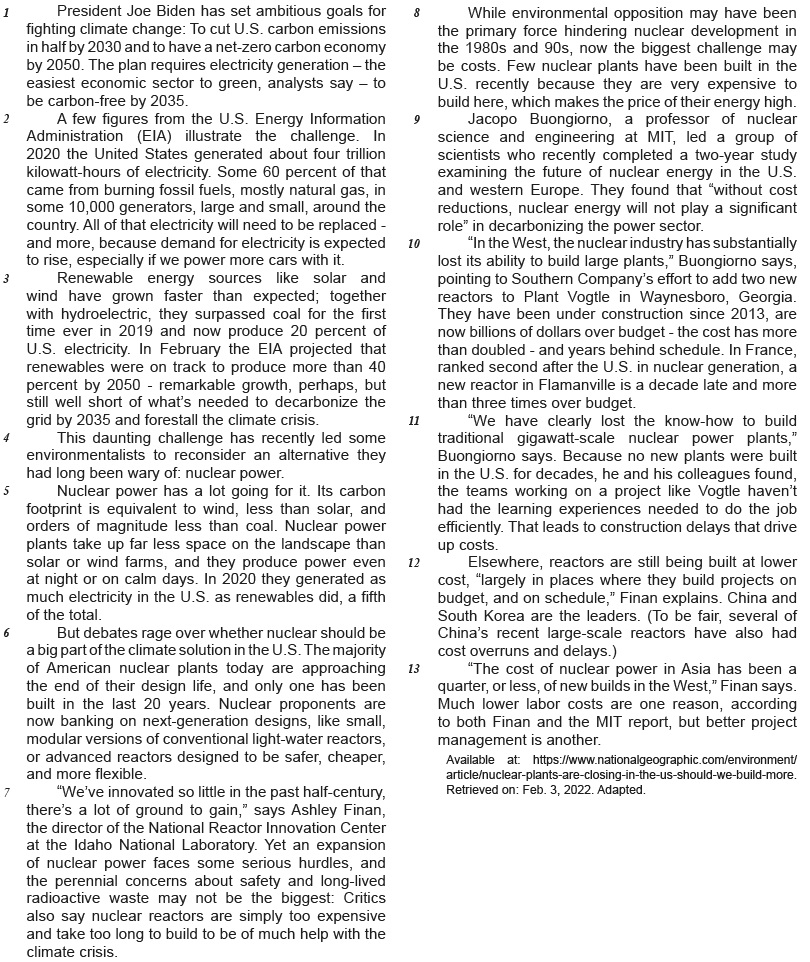Questões de Concurso
Filtrar
1.864 Questões de concurso encontradas
Página 28 de 373
Questões por página:
Questões por página:
mostrar texto associado
“This daunting challenge”, in paragraph 4, refers to the
mostrar texto associado
In the fragment of paragraph 2 “because demand for electricity is expected to rise, especially if we power more cars with it”, is expected to rise is used to
mostrar texto associado
In the fragment of paragraph 1 “The plan requires electricity generation – the easiest economic sector to green, analysts say – to be carbon-free by 2035”, to green means to
Concurso:
Prefeitura de Arcoverde - PE
Disciplina:
Inglês
Julgue o item a seguir.
In the process of reading texts in a foreign language like English, it's essential to have a broad vocabulary knowledge to fully comprehend the text, since the use of authentic texts in the classroom requires students to be able to decode them without any issues, it makes it possible to effectively approach the text in class.
Concurso:
Prefeitura de Arcoverde - PE
Disciplina:
Inglês
Julgue o item a seguir.
Studies related to reading strategies highlight that the reader's prior knowledge does not significantly influence the comprehension of reading texts in a foreign language.
